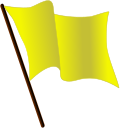Terminology
In New Zealand, the term "liberalism" has been used by a large variety of groups and organisations, but usually refers to a support for individual liberties and limited government. The term is generally used only with a reference to a particular policy area, e.g. "market liberalism" or "social liberalism". In its extreme form it can be known as "libertarianism", although this term is used less in New Zealand than in some other countries. Some historians claim that liberalism was a dominant force in New Zealand until around 1936, citing the strong position of the Liberal Party. However, there is (and always was) debate as to whether the Liberal Party was actually liberal—according to some observers, it would be better described as "socialist", although this was a common accusation made against early 20th century liberals, around the world.
Today, there is no party which is universally recognised as "the party of liberalism", although there are parties which attempt to claim this title—ACT New Zealand, for example, has labelled itself as "the Liberal Party". [4] However, both major parties in New Zealand, the Labour Party and the National Party, have incorporated aspects of liberalism into their current agenda, with the former embracing social liberalism and the latter economic liberalism.
This page is based on this
Wikipedia article Text is available under the
CC BY-SA 4.0 license; additional terms may apply.
Images, videos and audio are available under their respective licenses.
